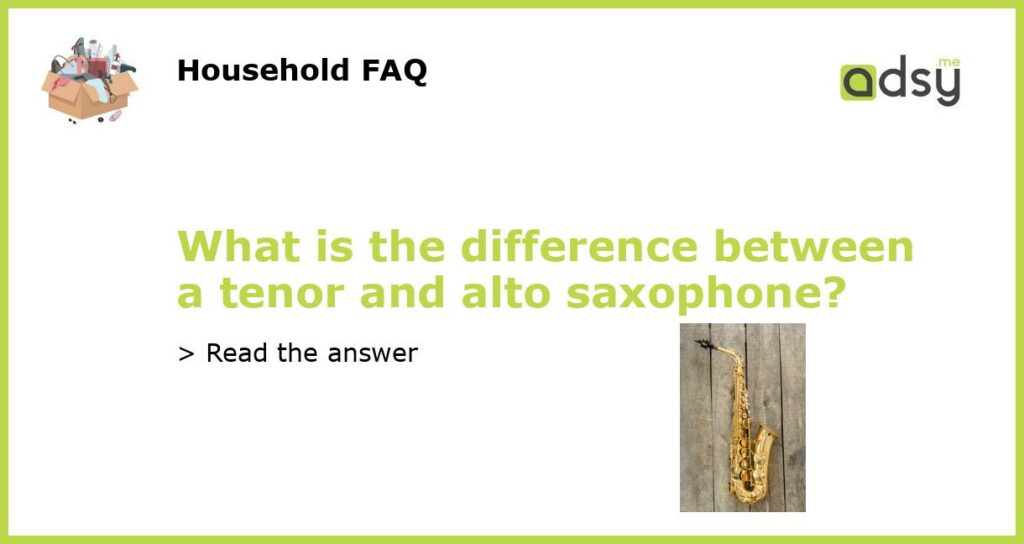The Anatomy of a Saxophone
Before delving into the differences between tenor and alto saxophones, let’s first understand the anatomy of a saxophone. A saxophone has three main parts – the body, the neck, and the mouthpiece. The body houses the keys and tone holes, which the musician presses down to create different notes. The neck is where the mouthpiece attaches, and it plays a crucial role in shaping the sound. The mouthpiece contains the reed, which is responsible for producing the sound.
Tenor vs. Alto Saxophone – Which is Which?
When it comes to saxophones, there are several types, including the soprano, alto, tenor, and baritone saxophones. The alto and tenor saxophones are the most popular, and they differ in size, pitch, and sound. The alto saxophone is smaller than the tenor sax, and it plays in the key of Eb, while the tenor sax is larger and plays in the key of Bb. The alto sax is known for its bright and light sound, while the tenor sax has a darker, richer tone.
The Sound of the Tenor Saxophone
The tenor saxophone has a lower range than the alto saxophone, and it’s often used in jazz and blues music. The tenor sax has a warm, mellow sound that’s well-suited for ballads and slower tunes. It’s also popular in rock and pop music, where it’s commonly used in horn sections or to play catchy melodies.
The Sound of the Alto Saxophone
The alto saxophone is generally associated with a brighter and more upbeat sound than the tenor sax. Its higher pitch and lighter tone make it a popular choice for jazz and funk music, where it’s often used to play fast, intricate melodies. The alto sax is also commonly used in popular music genres, such as rock and R&B.
Which Saxophone is Right for You?
Choosing between an alto and tenor saxophone ultimately comes down to personal preference, but several factors can influence your decision. For example, if you’re a beginner, an alto sax may be easier to handle, while the tenor sax may be more challenging to master. If you’re playing in a band or ensemble, you may want to consider which saxophone is more often used in that particular style of music. Ultimately, the best way to determine which saxophone is right for you is to try them both out and see which one speaks to you personally.






